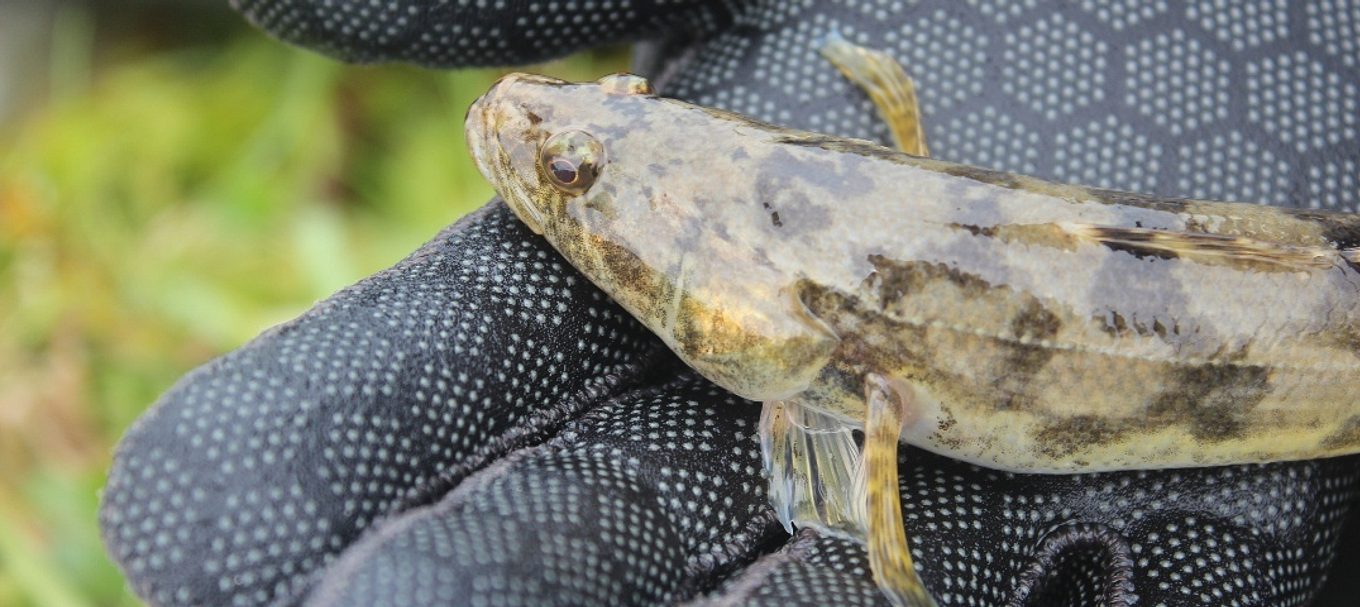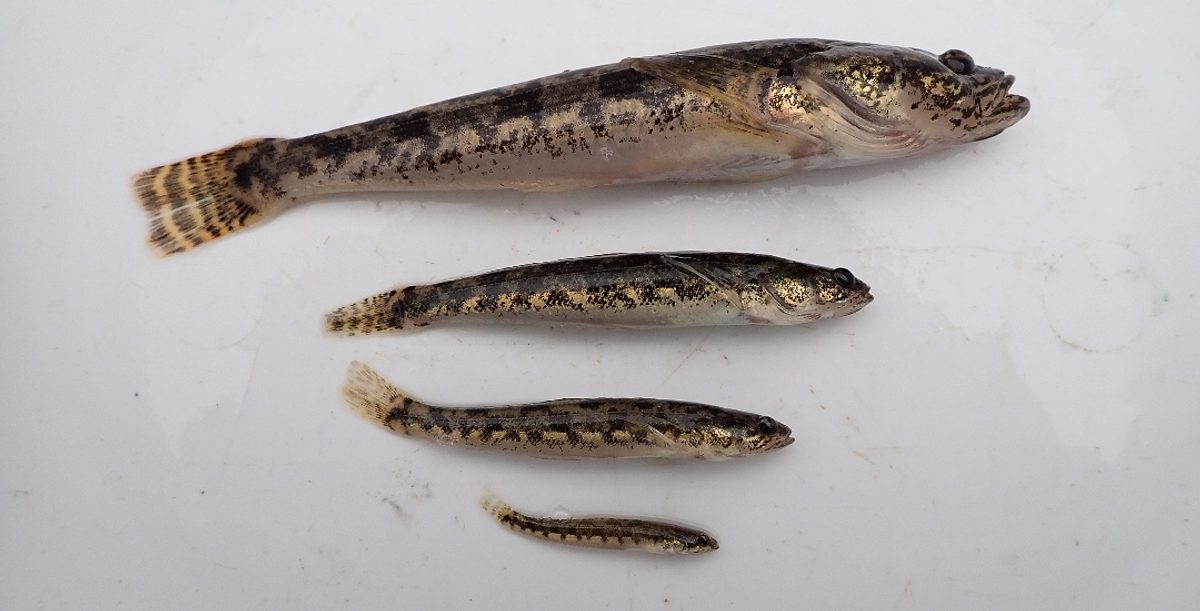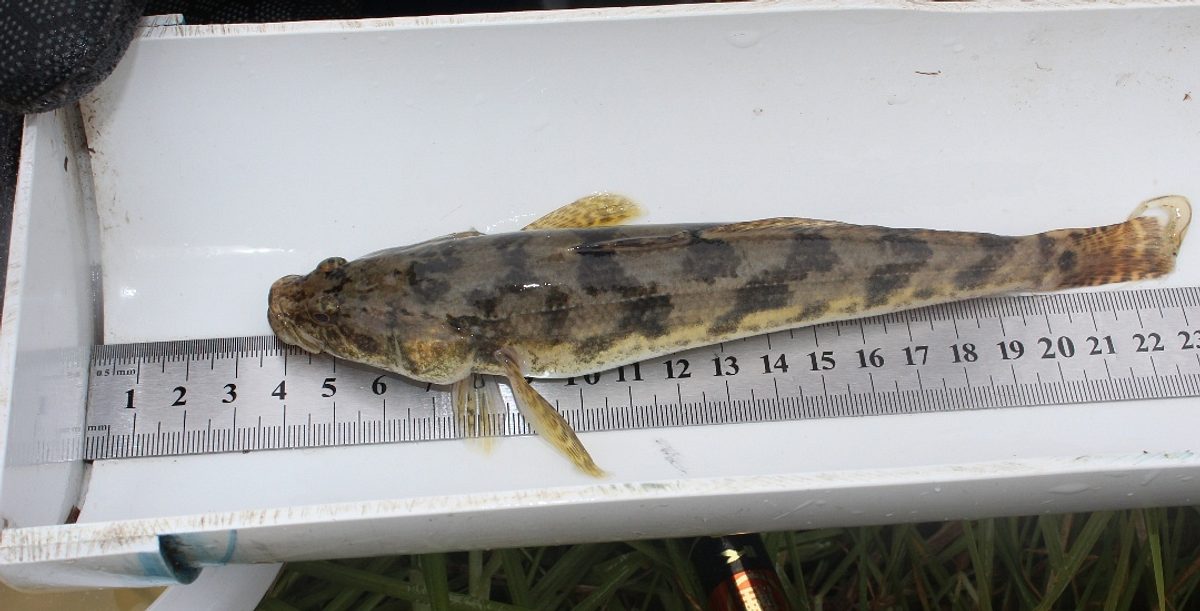
How native congolli fish have been given a lifeline in South Australia
You may already have come across the native Australian congolli, or perhaps know them by one of their other names – including freshwater flathead, sand trout, sandy whiting or tupong.
Congolli are small-bodied native Australian fish that are a mottled brown colour and have a silvery-white underside. They have a flattened head, sharp snout and eyes close together near the top of their head.
What is quite amazing about them is that they spend different parts of their lifecycle in fresh water and salt water – so they need flowing water to get about and move between the Lower Lakes, Coorong and ocean.
Take adult females. They live in fresh water and then migrate downstream in winter to the ocean. They swim from South Australia’s Lake Alexandrina down to the Coorong estuary and then out to the Southern Ocean when it’s time to meet and breed.
In late spring and summer, newly spawned juveniles then return upstream to fresh water, travelling via the fishways, or special fish ladders, that have been purpose-built on the barrages. These fish ladders enable all sorts of fish and wildlife to get to where they need to be in the Murray-Darling Basin river system at different points in their life-cycles.
The barrages can also be closed at different times to help stop seawater going back upstream – which it can do under certain weather conditions. If too much seawater gets into Lake Alexandrina, it can adversely affect local irrigation and harm freshwater ecosystems.
During the Millennium Drought there was no fresh water flowing from Lake Alexandrina to the Coorong, so the congolli could not move about to meet and breed.
The situation was dire and it became even worse towards the end of the Millennium Drought, when the majority of the adult females were nearing the end of their lifespan – which is around six years. Fish monitoring at the time confirmed our worst fears of a catastrophic drop in congolli numbers and local extinction was a very real possibility.

Congolli given a lifeline
In recent years, the Lower Lakes and Coorong have benefitted from ‘water for the environment’ as part of the Murray-Darling Basin Plan – a plan helping to ensure water in the Murray-Darling Basin is shared sustainably between all users, including the environment and for native species like the congolli.
Water for the environment is described as water specifically allocated to meet the ecological needs of plant and animal communities to survive and reproduce. Having enough water for the environment is critical for the Murray-Darling Basin’s long-term health – including to keep the Murray Mouth open, flushing salt from the system and providing water to precious wetlands and floodplains that need a varied flow regime to thrive.
Since the end of the Millennium Drought, water for the environment under the Murray-Darling Basin Plan has helped ensure a continuous flow of water through the fishways and barrages.
So having freshwater flows from Lake Alexandrina to the Coorong estuary has dramatically helped fish species like the congolli survive, with numbers returning to their highest level seen in over a decade.
Thankfully last year’s winter flows from the Goulburn River in Victoria also coincided with the downstream migration of female congolli ready to breed, so numbers should continue to rise.
About congolli
Want to know more about this species? Here is a few fun facts to keep up your sleeve:
- They are a native Australian species.
- Their scientific name is Pseudaphritis urvillii.
- They are commonly called congolli, freshwater flathead, sand trout, tupong or sandy whiting.
- They are a culturally significant fish to the Ngarrindjeri people, the Traditional Owners of the lands and waters of the Lower Lakes, Coorong and Murray Mouth.
- They eat plants, small fish and crustaceans.
- They are an opportunistic carnivore which buries itself in sand to catch prey.
- They are a key food source for mulloway and larger fish like golden perch, as well as for birds like pelicans and cormorants.
- They can grow on average between 10-20cm (females can grow up to 35cm).

Check out our other stories for more information about water for the environment and the species it helps. You can also find out more by reading the Murray-Darling Basin Authority Fact Sheet.





